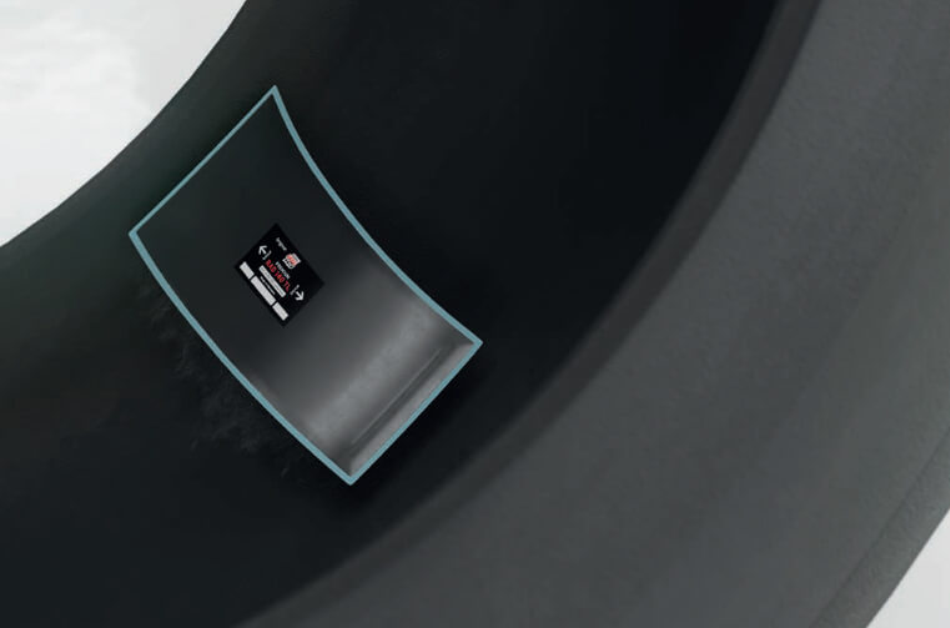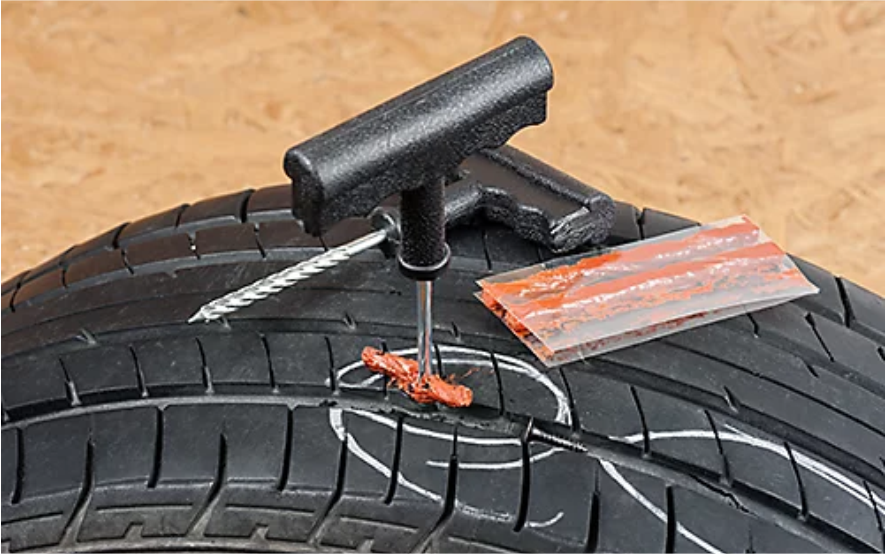
Introduction:
When faced with a punctured tire, choosing the right repair method is essential for ensuring safety and prolonging the tire’s lifespan. Two common solutions are tire plugs and tire patches. In this blog post, we’ll explore the difference between these two repair methods, their applications, and when to use each to effectively address tire punctures.
- Tire Plug: A tire plug is a flexible, narrow strip made of rubber or synthetic material. It is designed to seal small punctures in the tire’s tread area caused by nails, screws, or other sharp objects. Tire plugs are commonly used for temporary repairs on tubeless tires, especially when on-the-spot repairs are necessary.
Usage:
- Tire plugs are best suited for small punctures up to 6mm in diameter.
- They work well for tubeless tires and are ideal for quick fixes during emergencies, allowing you to continue driving to the nearest repair facility.
How to Apply a Tire plug
- (1) Locate the puncture: Identify the location of the puncture on the tire’s tread.
- (2) Ream the hole: Use a tire reamer to clean and enlarge the puncture hole slightly.
- (3) Insert the plug: Insert the tire plug into the puncture hole using a plug insertion tool until only a small portion of the plug remains visible outside the tire.
- (4) Trim excess plug: Trim any excess plug material flush with the tire’s tread surface.
Note: While tire plugs are a convenient temporary solution, they are not recommended for long-term use. It is crucial to have the tire professionally inspected and repaired with a more permanent solution, such as a tire patch, as soon as possible.
- Tire Patch: A tire patch is a more permanent repair method that involves adhering a rubber patch to the inner surface of the tire. It is commonly used for larger punctures, sidewall damage, and more significant tire injuries. Tire patches create a strong bond with the tire, ensuring a reliable and durable repair.
Usage:
- Tire patches are suitable for larger punctures, injuries close to the sidewall, or when the puncture is too large for a tire plug to effectively seal.
- They are commonly used for repairing tubeless tires, as well as some tube-type tires.
How to Apply a Tire Patch
- (1) Inspect the puncture: Carefully inspect the puncture to determine its size and location.
- (2) Prepare the tire: Remove the tire from the rim and thoroughly clean the inner surface around the puncture area.
- (3) Apply the patch: Select an appropriate size and type of tire patch, then apply it to the cleaned area using a suitable adhesive.
- (4) Allow curing time: Follow the manufacturer’s instructions for curing time to ensure the patch forms a secure bond with the tire.
When to Choose Each Method:
Choose a tire plug for:
- Small punctures up to 6mm in diameter.
- Temporary repairs to get you to a repair facility quickly.
- Tubeless tires that have experienced minor punctures.
Choose a tire patch for:
- Larger punctures that exceed the plug’s capacity to effectively seal.
- Injuries closer to the sidewall.
- Long-term and more permanent tire repairs.
Conclusion: Knowing the difference between tire plugs and tire patches is crucial when faced with a punctured tire. Tire plugs are a convenient temporary fix for small punctures in tubeless tires, allowing you to reach a repair facility safely. On the other hand, tire patches offer a more permanent solution for larger punctures and injuries, ensuring the tire’s integrity is restored for extended use. Remember to consult with a professional tire technician to determine the most suitable repair method for your specific tire puncture situation.

